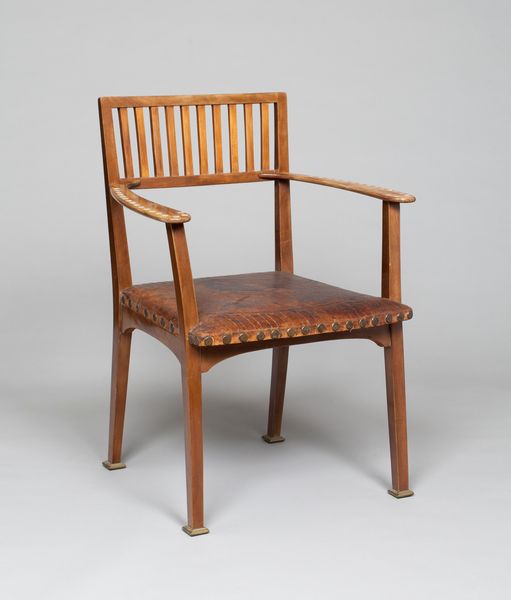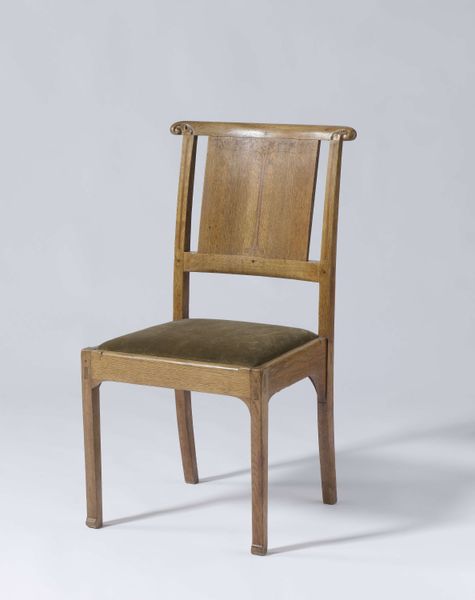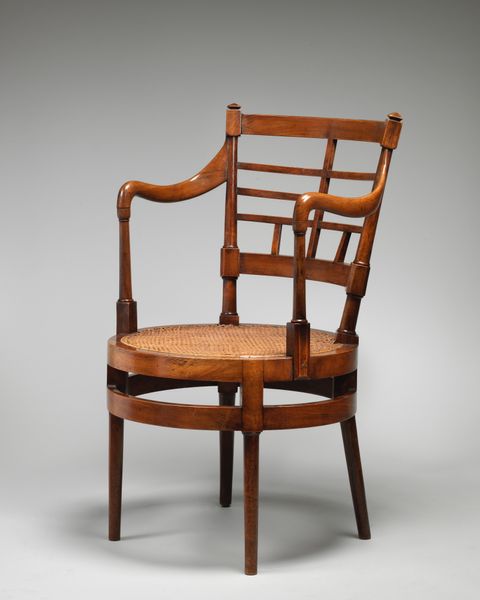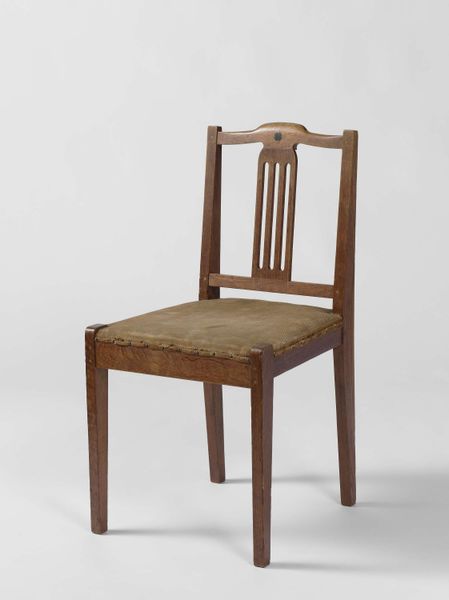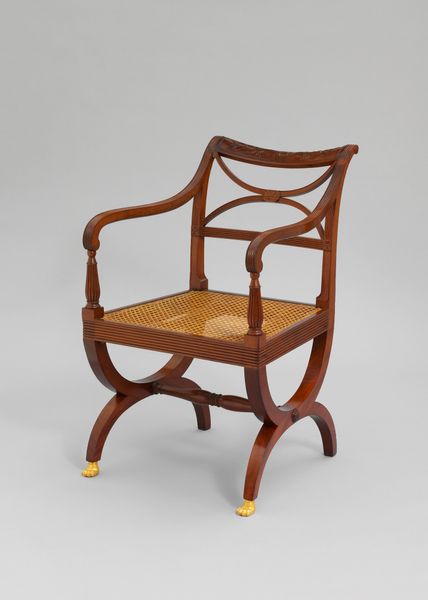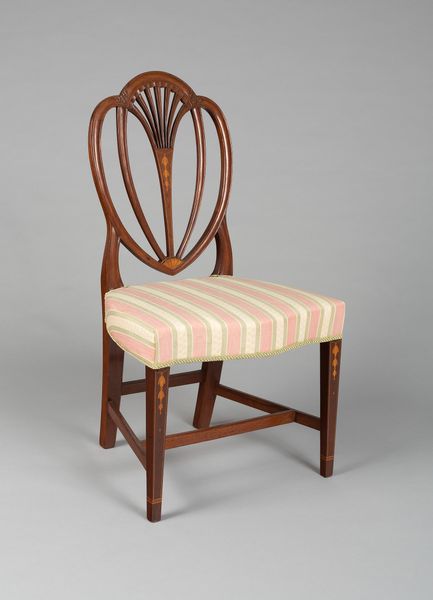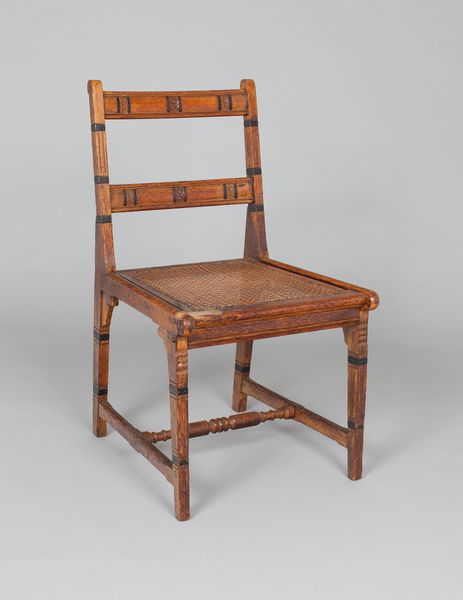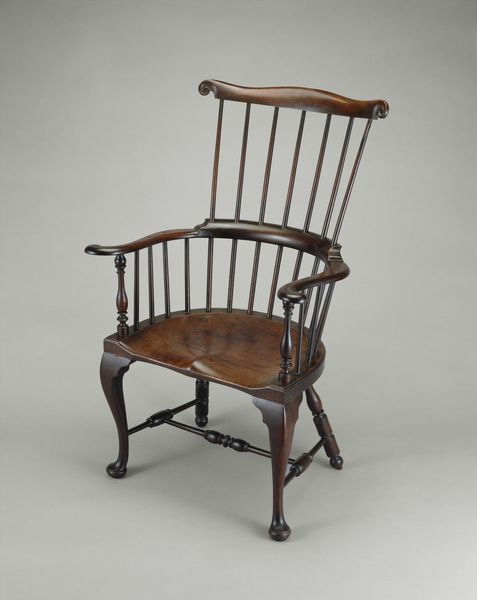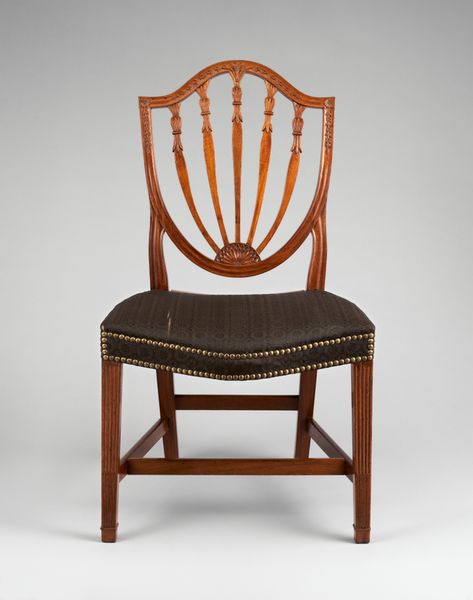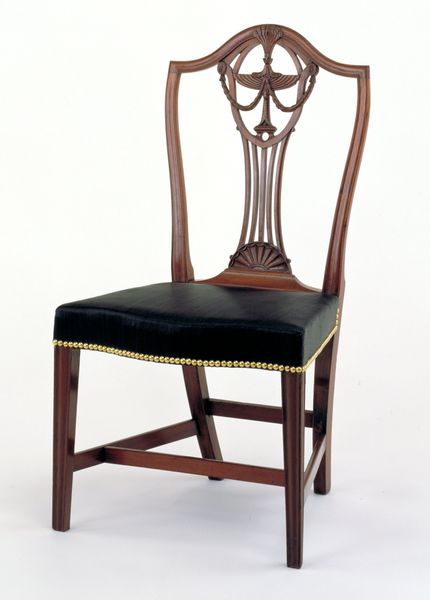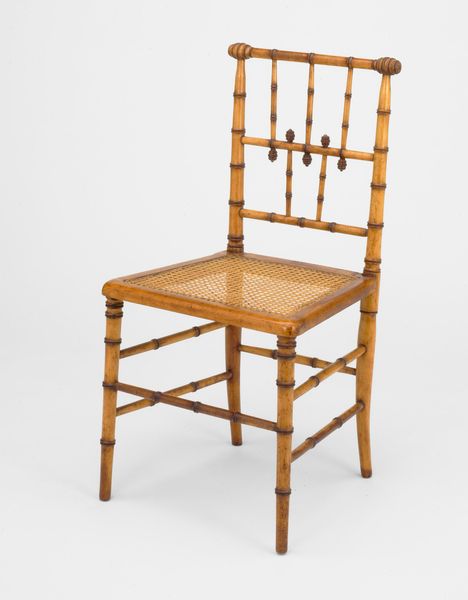
wood
#
furniture
#
wood background
#
wood
Dimensions: 33 1/4 x 16 7/8 x 19 in. (84.46 x 42.86 x 48.26 cm)
Copyright: Public Domain
The Boppard chair, created by Michael Thonet, showcases the innovative bending technique developed in the 19th century. Thonet, born in Germany, revolutionized furniture design by using steam to bend wood into elegant, lightweight forms. This chair emerges from a period defined by industrial change and shifting social structures. The Boppard chair embodies these changes in its innovative production methods. Its design reflects a move toward more democratic aesthetics, as it made stylish furniture more accessible. Consider the chair's original context, where it might have furnished a middle-class home. In that setting, the chair serves a function and signals an aspiration for modern living. The woven seat and curved lines offer both comfort and visual appeal. The chair's simple elegance invites us to consider how everyday objects can reflect broader cultural and technological shifts.
Comments
minneapolisinstituteofart about 2 years ago
⋮
Indelibly identified as classics of modern design, the remarkable bentwood furnishings of Gebrüder Thonet continue to turn heads more than a century later. The history of bentwood furniture dates back centuries, but it was Michael Thonet, an enterprising cabinetmaker from Boppard-am-Rein in Germany, who propelled the notion of steam-bending woods (and subsequently, tubular metal) into the 20th century, representing a significant passage from craft to industrial production. In 1819, Thonet began producing delicate, lightweight Biedermeier designs in his hometown, one surrounded by forests. This led to experiments with laminated wood a decade later. Having gained the patronage of Prince Metternich, he moved to Vienna where this side chair was made. Today, this chair serves as a celebrated example in which the stylish forms of Biedermeier furniture converge with a new, revolutionary technology. Incidentally, we continue to struggle with the correct pronunciation, many preferring the French Tho-Nay rather than the correct German TONN-ett.
Join the conversation
Join millions of artists and users on Artera today and experience the ultimate creative platform.
